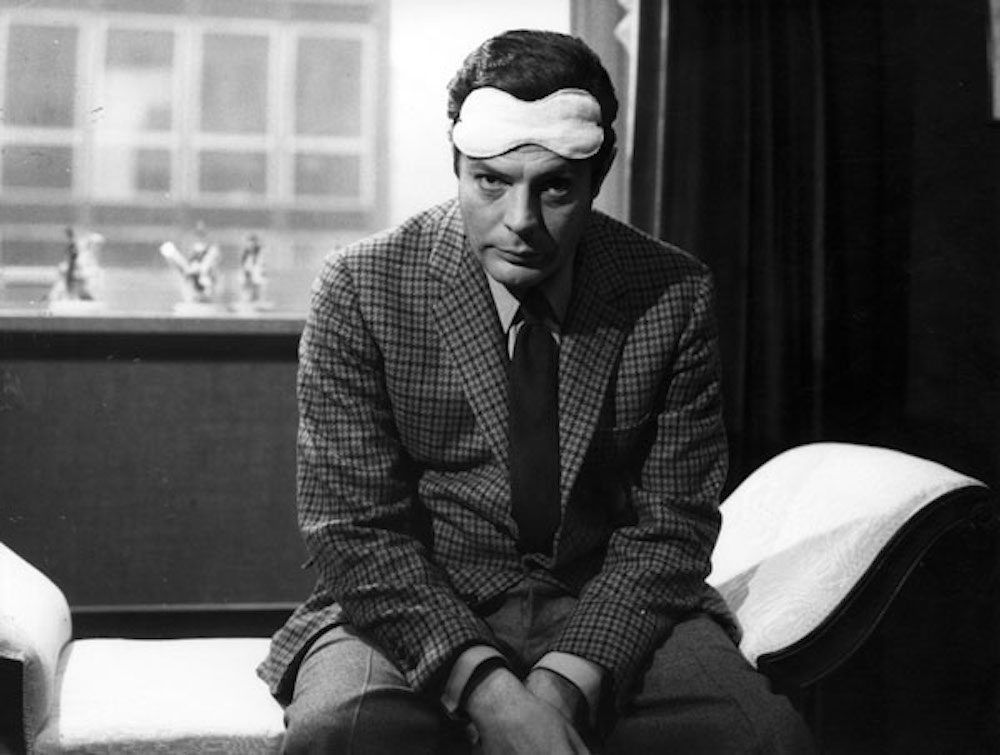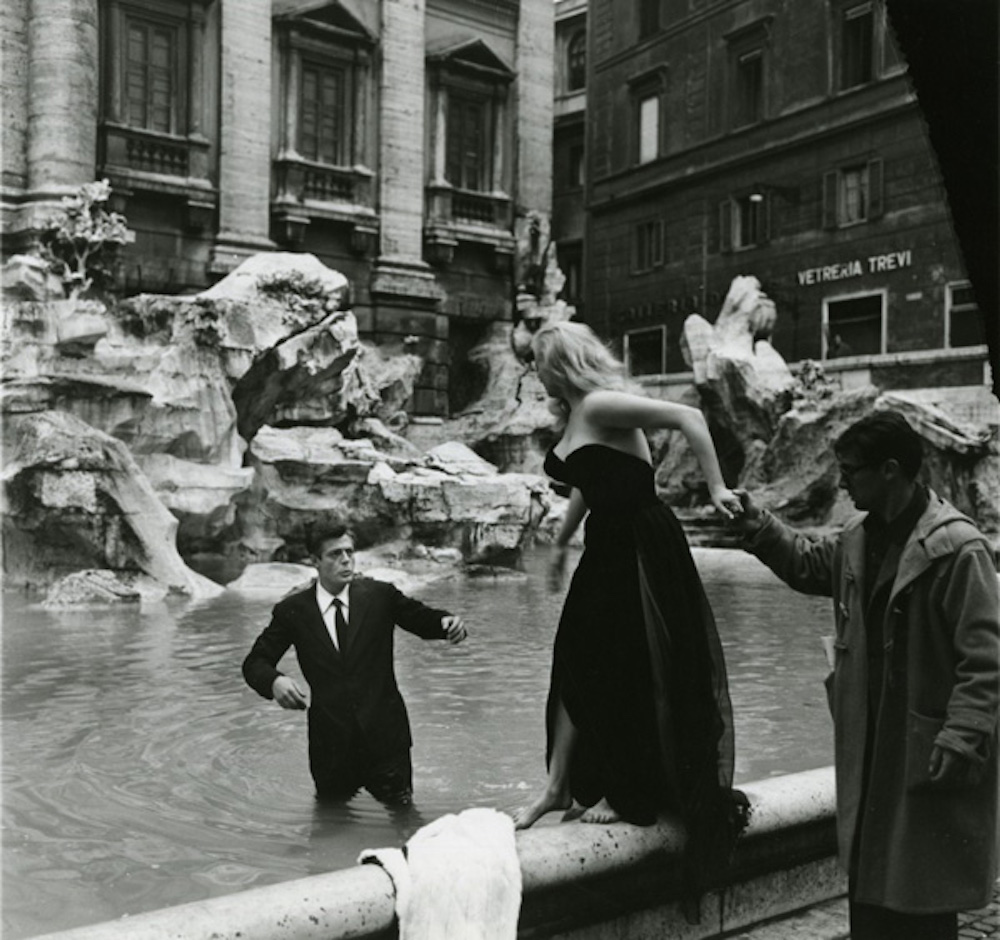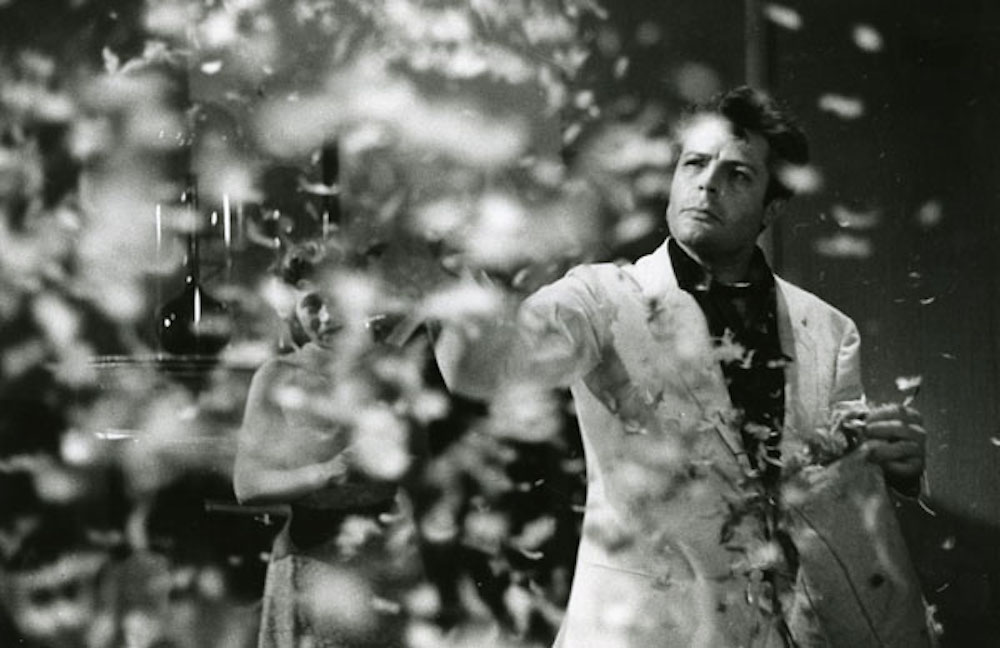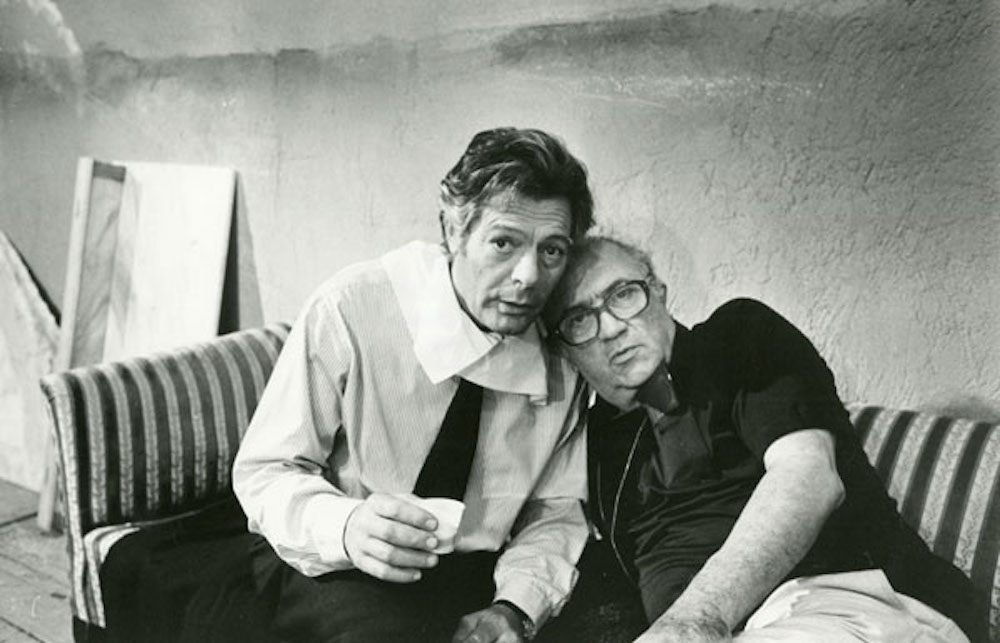Thea Hawlin looks back at the life and work of Marcello Mastroianni, the shape-shifting film icon

You already know the scene. ‘Marcello!’ the beautiful blond cries, the train of her black dress swimming in the waters of the Trevi fountain, ‘Marcello! Come here!” Her arms open wide. Marcello. The character and the actor. In the moment he answers the call, the two become one and the same.
This scene in Fellini’s La Dolce Vita made Marcello Mastroianni. Born in 1924 in the small town of Fontana Liri, in Mastroianni’s own words: “We accepted poverty as a natural condition of our lives. My mother said my father was a cabinetmaker, but he only repaired broken furniture in a garage. He also repaired the holes in my shoes with pieces of aluminum; when I walked, it sounded like a horse. I wore my uncle’s hand-me-down clothes – my arms hung out; they called me ‘skinny-paws.’” It feels strange to think that the boy who used to clop around wearing hand-me-downs would become famous for his fine-tailoring, a “luxury tourist” (his own words) who would fly his Roman barber Guilio out to Hollywood at a moment’s notice.

Fellini’s Marcello, his pursuit of women and stories, matched Mastroianni’s own tale. Soon Marcello personified La Dolce Vita: the suave-suited evenings, the skinny ties and double-breasted blazers, the dark glasses lifted by a single finger to glimpse the world before slipping back down onto an elegant Roman nose. Mastroianni was the glamorous Italian who wandered Rome at night, like a knight swooping in to save a damsel in distress. His heroism in the now iconic Trevi Fountain scene where he leads Anita Ekberg by the hand back to the bank, and back to reality, is legendary. As he waded through the 257 year-old fountain’s waters little did he know he was walking towards a whole new chapter of his career; his relationship with Fellini would last a lifetime.
To celebrate the life and work of Mastroianni, a collection of photographs, posters and archival materials are on show in Rome’s Museo dell’Ara Pacis. Mastronianni’s range is impressive. In 1960, the year he was officially dubbed a sex symbol, he played Mauro Bolognini’s impotent Sicilian count in Bell’Antonio. Looking around, we see him as a taxi driver, a priest, a NATO officer, a retired pimp, even a tap-dancer. Elegant one moment, scruffy the next, his hair long and bedraggled, then short and smooth, his face is continually transformed: moustached, bearded, or clean-shaven. His career is marked by international awards: three Oscar nominations for Best Actor, two Golden Globes, eight David di Donatello awards, two prizes from the Cannes Film Festival and two Volpi Cups at the Venice Film Festival. With more than a hundred films made between the forties and the end of the nineties, Mastroianni talked about his life as one lived “in brackets”, jumping from character to character from one set to the next. Mario Monicelli, director of several Mastroianni films noted his ability to tap into a true depth of emotion: ”he draws it out of a tremendous reservoir.”

”It’s like a woman getting pregnant,” was Mastroianni’s own take. ”This character, this person that I am to become, starts to grow inside me, little by little. He begins to talk to me, and I listen like a primitive naïf. If I don’t listen, he will die in me. So I’m eating a plate of spaghetti and I hear him. Then I stop somewhere, say, at a traffic light – and there he is in the car next to me. In a flash, I know all about him – his wife, his children, his mistresses, his fantasies, all of it. So when I come onto the set, I ask, ‘What happens to me today?’ They tell me, and this character inside me takes over.”
Fellini echoed the same sentiment: ”Marcello is less an actor than a person who gets inside a role and turns it into temporary reality.” He loved Marcello because on set he had “already digested the part and reconstructed it.” Digestion feels like a fitting term for the actor who declared: “You can work on your character while you’re eating spaghetti in a crowded restaurant”. What Monicelli saw as a reservoir, Mastroianni might instead have called a stomach. “I’m a good actor” he said, “because I’ve lived a full life.” Reaching into the depths of one’s own experience was never going to be a clear dive into still water for the Italian star; it was a dive into a full belly, into one’s own organs, a space filled with experience, with flavour; a melting pot that fed his work and life completely.

Yet you are what you eat. Mastroianni’s wife Flora Carabella saw the ways this ‘digestion’ changed her husband with each role; she declared he was a man “made of modeling clay”. For Mastroianni it was less a moulding, more a complete transference: “I only exist when I am working on a film.” Looking around at the images that plaster these Roman walls, one feels the truth of curator Gian Luca Farinelli’s assertion that Mastroianni’s filmography should be treated as “a mirror of his own life”; Mastroianni may be gone, but as this collection attests, his characters live on.
Port takes a look at The Best of Spring Tailoring